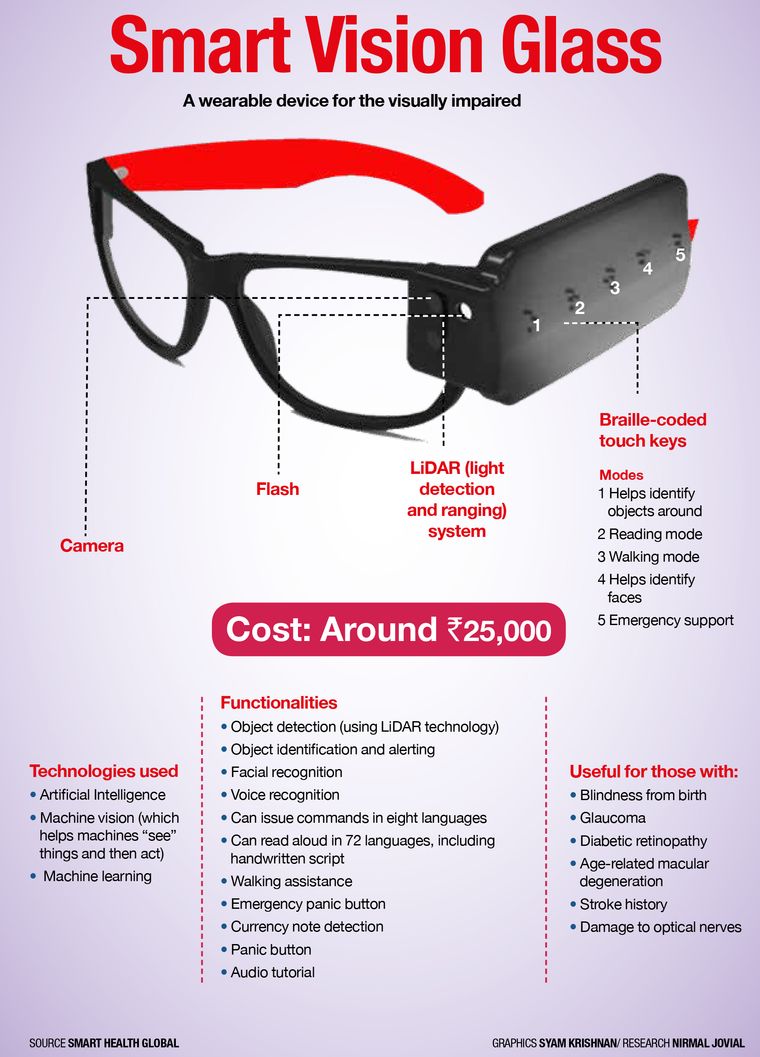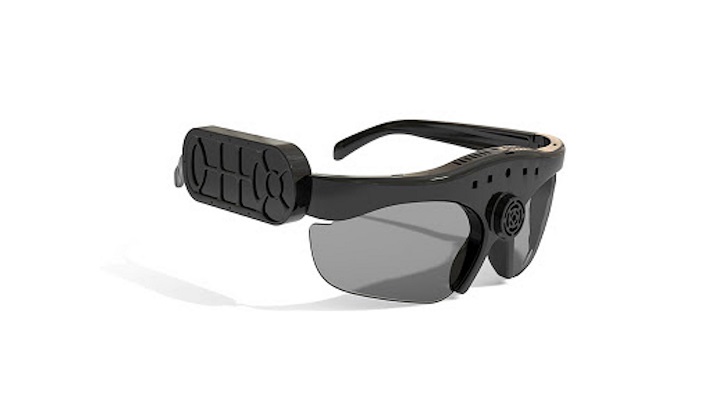AI-Powered Visual Aids: The Next Step in Assistive Technology for the Blind
AI-Powered Visual Aids: The Next Step in Assistive Technology for the Blind
Blog Article
Empowering Self-reliance With Assistive Technology for the Blind
The combination of assistive technology for people who are aesthetically impaired or blind stands for a substantial innovation in fostering independence and enhancing top quality of life. With an array of devices-- from screen viewers to innovative tactile devices-- these modern technologies not just assist in navigation and interaction yet likewise promote social inclusion and participation in various facets of life.
Recognizing Assistive Innovation
Although assistive technology has developed dramatically throughout the years, its essential purpose continues to be the exact same: to enhance the quality of life for individuals with handicaps, especially those that are blind or aesthetically damaged. This innovation encompasses a wide variety of devices and devices that facilitate independence and functionality in everyday tasks.
Assistive modern technology can be classified into modern and low-tech remedies, each created to satisfy certain demands. High-tech tools commonly include software application applications, specialized hardware, and adaptive devices that use advanced innovation to supply assistance in different contexts. On the other hand, low-tech solutions may entail daily products that are changed to boost ease of access, such as magnifiers or responsive markers.
The combination of assistive technology into the lives of individuals that are blind or visually hindered not only promotes autonomy but likewise promotes social addition and participation in specialist and instructional atmospheres. By leveraging these technologies, individuals can browse their environments, access information, and communicate successfully, therefore boosting their general high quality of life. Understanding assistive technology is crucial for specialists, caretakers, and supporters who intend to support people in maximizing their potential and accomplishing higher self-reliance.
Types of Assistive Tools
Assistive gadgets for the aesthetically damaged and blind are necessary tools that improve daily living by attending to particular challenges come across by individuals. These devices can be extensively classified into three major types: optical gadgets, digital devices, and sensory devices.

Sensory gadgets, such as Braille display screens and responsive maps, give different methods to get info. Braille shows transform electronic message right into Braille, allowing users to go through touch. Tactile maps offer spatial understanding with increased lines and structures, enabling far better environmental understanding.
Together, these assistive devices encourage people with visual disabilities to engage more totally with their surroundings, advertising greater self-reliance and confidence in day-to-day tasks.
Influence on Daily Life
The assimilation of assistive modern technology into the daily lives of people that are visually damaged or blind substantially improves their capability to connect and navigate with the globe around them. Gadgets such as display viewers, Braille displays, and mobile applications promote access to information, enabling individuals to involve with digital content, communicate efficiently, and take care of daily jobs individually.
In addition, modern technologies like clever glasses and navigating applications offer real-time help in unfamiliar environments, enhancing flexibility and self-confidence. These devices allow individuals to determine barriers, reviewed indications, and also identify faces, hence cultivating a sense of autonomy in public spaces. In addition, home automation systems, which can be managed via voice commands, enable people to handle their living environments much more efficiently, improving comfort and safety.
The impact of assistive innovation extends past useful tasks; visit this web-site it advertises social inclusion and psychological well-being. By connecting the gap between people and their environments, these modern technologies encourage individuals to get involved totally in community tasks, seek instructional chances, and involve in meaningful connections. Ultimately, the innovation of assistive innovation contributes in redefining the possibilities for people who are aesthetically damaged or blind, leading to an extra comprehensive and available culture.
Success Stories and Endorsements

An additional powerful review originates from Mark, a current college grad who used display analysis software application throughout his academic trip. This innovation enabled him to gain access to course materials and get involved in discussions, ultimately resulting in his effective change right into the workforce. Mark credit scores assistive technology for encouraging him to achieve his career objectives, emphasizing its duty in leveling the having fun field for individuals with visual impairments.
Furthermore, recreation center have reported increased involvement in their programs thanks to the introduction of obtainable electronic platforms. These platforms have actually made it simpler for people to attach, share sources, and support each other. These success tales collectively emphasize the profound impact of assistive modern technology in promoting independence, boosting lifestyle, and breaking down obstacles for the blind and visually impaired neighborhood.
Future Patterns in Assistive Tech
Emerging technologies are poised to revolutionize the landscape of assistive tech for individuals who are blind or visually damaged. Innovations in fabricated intelligence (AI) and maker discovering are enhancing the capacities of devices, Recommended Reading making it possible for more instinctive customer experiences. For instance, AI-driven applications are significantly able to acknowledge things and read message out loud in real-time, providing customers with important info about their surroundings.
Additionally, improvements in wearable modern technology are creating new chances for independence. Smart glasses geared up with increased truth functions can overlay critical information onto the customer's visual field, facilitating navigating and communication with the environment. In addition, the integration of Net of Points (IoT) tools is enhancing accessibility in wise homes, permitting users to image source regulate devices and receive alerts via voice commands or tactile interfaces.
The growth of braille display screens and responsive responses systems is also rising, promoting access to digital web content and boosting communication. As these innovations remain to advance, they guarantee to boost everyday living, educational chances, and employment potential customers for individuals with visual disabilities. Continuous partnership in between technologists, users, and advocacy groups will be necessary in guaranteeing these developments satisfy the demands of the area properly.
Conclusion
Finally, assistive technology plays an essential function in improving the independence of people who are aesthetically damaged or blind. By supplying important tools and resources, these technologies help with improved accessibility, communication, and navigation to details, thus promoting freedom and positive self-image. The transformative influence of assistive tools not just promotes effective interaction with the environment yet additionally encourages social addition and involvement in different facets of life, ultimately encouraging individuals to flourish within their communities.
The combination of assistive innovation for individuals who are visually impaired or blind stands for a considerable improvement in cultivating self-reliance and enhancing top quality of life.The assimilation of assistive modern technology right into the lives of people who are blind or visually hindered not just promotes freedom but likewise fosters social inclusion and involvement in academic and specialist settings. Inevitably, the innovation of assistive technology is critical in redefining the opportunities for individuals that are aesthetically impaired or blind, leading to an extra comprehensive and available society.
Many individuals that are blind or aesthetically damaged have shared motivating success stories that highlight the transformative influence of assistive innovation on their lives.In verdict, assistive innovation plays a critical function in boosting the independence of people that are blind or visually damaged.
Report this page